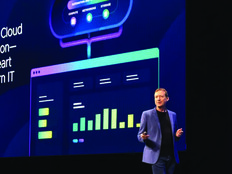Machine Learning Is Making Acquisition Easier
NIH uses ML to identify what it’s buying, communicate that with both the government and industry, and improve contract efficiency based on the insights garnered, said Ricky Clark, deputy director of the NIH IT Acquisition and Assessment Center.
Meanwhile, the Food and Drug Administration, and the Department of Health and Human Services more broadly, are evaluating the use of bots to assist with contract closeouts. HHS had about 97,000 contracts in need of closeout at one point, said Andrew Jernell, director of the Division of IT Acquisitions.
The FDA currently uses the PRISM contracting system for procurements but still struggles to locate relevant documents — a task ML could make easy, Jernell said.
However, incorporating artificial intelligence (AI) into procurement decisions, which still need to be made by humans, isn’t happening anytime soon.
“We are not looking at a lot of AI per se, where a machine makes the answer for us, because procurement is not really set up that way at the present time,” Jernell said.
That doesn’t mean the broader FDA isn’t considering the technology for data crunching and help with one of its core missions: identifying food-borne illness patterns, he added.
DISCOVER: How integrated solutions allow agencies to quickly add technology.
The Future Is Technology as a Service
While procurement processes at NIH and the FDA may be further along than at the VA, NIH in particular is interested in updating its automation capabilities every couple of years.
“We may be advanced today, but that’s not advanced tomorrow,” Clark said. “We depend on feedback from the private sector and the federal sector so we can stay ahead of the curve.”
Parrish envisions a future at the VA where the automation boosting acquisitions is all Technology as a Service, with no more need for technology refreshes every two years.
“The government shouldn’t be buying technology that’s going to be obsolete once it goes off the shelf,” Parrish said. “Part of this supply chain modernization proof of concept is the solutions provider is going to have an enforceable obligation to measure and to continually modernize the system as you go over this 10-, 20-year journey.”











